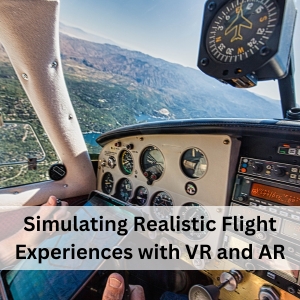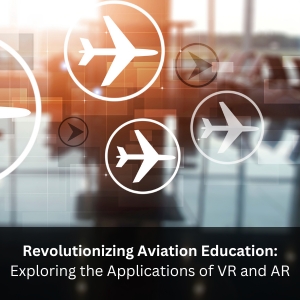Announcement
We are excited to announce the Indus Hackathon 2025, an exhilarating one-day event organized by the CSE Department of Indus University....Read more We are excited to announce the Indus Hackathon 2025, an exhilarating one-day event organized by the CSE Department of Indus University.
26th ISTE Faculty Annual State Convention will be held at Indus University on April 27, 2023....Read more 26th ISTE Faculty Annual State Convention will be held at Indus University on April 27, 2023.
26th ISTE GUJARAT STATE ANNUAL FACULTY CONVENTION & CONFERENCE ON APRIL 27,2023. MORE DETAILS WILL BE SHARED SOON....Read more 26th ISTE GUJARAT STATE ANNUAL FACULTY CONVENTION & CONFERENCE ON APRIL 27,2023. MORE DETAILS WILL BE SHARED SOON.
We are excited to announce the Indus Hackathon 2025, an exhilarating one-day event organized by the CSE Department of Indus University....Read more We are excited to announce the Indus Hackathon 2025, an exhilarating one-day event organized by the CSE Department of Indus University.
26th ISTE Faculty Annual State Convention will be held at Indus University on April 27, 2023....Read more 26th ISTE Faculty Annual State Convention will be held at Indus University on April 27, 2023.
26th ISTE GUJARAT STATE ANNUAL FACULTY CONVENTION & CONFERENCE ON APRIL 27,2023. MORE DETAILS WILL BE SHARED SOON....Read more 26th ISTE GUJARAT STATE ANNUAL FACULTY CONVENTION & CONFERENCE ON APRIL 27,2023. MORE DETAILS WILL BE SHARED SOON.

Virtual Reality (VR) has transformed aviation training by providing immersive and realistic experiences for aviation professionals. Pilots, cabin crew, and ground staff can train in a virtual environment that mimics real-world circumstances using VR technology. This form of training helps employees to practise essential skills and processes, develop situational awareness, and make better decisions.
Virtual reality training programmes for pilots are meant to replicate a variety of flying scenarios, including takeoff, landing, and emergency situations. Pilots may experience a very realistic cockpit environment, interact with controls and instruments, and practise procedures without the requirement for an actual aircraft by wearing VR headsets. This immersive training assists pilots in developing confidence, honing skills, and improving overall performance.
 Training for Aviation Professionals.jpg)
Virtual reality (VR) training is transforming how students gain practical knowledge and abilities. Aspiring aviation maintenance engineers may receive hands-on experience examining, repairing, and troubleshooting aircraft components and systems through realistic simulators. Without the need for actual aircraft, virtual reality technology allows students to interact with virtual aircraft models, mimic maintenance operations, and discover possible concerns. This virtual training environment allows students to practise important activities, develop problem-solving skills, and get a better grasp of complicated aircraft systems in a safe and regulated setting. Colleges and training institutions are educating students for real-world difficulties and ensuring they are equipped with the required abilities to flourish in their professions as licenced aviation maintenance engineers by adding VR into aircraft maintenance engineering courses.
VR training provides a platform for cabin crew personnel to learn and practise critical safety procedures, emergency protocols, and customer service skills. In a controlled simulated environment, they may become acquainted with the cabin layout, practise evacuations, and deal with complex circumstances. This form of instruction improves their confidence and efficiency in dealing with real-life problems.
 in Aviation Maintenance and Repairs.jpg)
Augmented Reality (AR) is important in aircraft maintenance and repair because it provides professionals with essential information and help as they work. AR technology superimposes digital information on the actual world, allowing maintenance employees to access real-time data, instructions, and visual aids while working on an aeroplane.
AR apps give step-by-step instructions, 3D models, and annotations to assist personnel in more correctly and efficiently performing complicated maintenance jobs. Technicians can see hidden components, diagnose damaged parts, and follow precise instructions without depending on paper manuals or numerous devices by wearing AR glasses or utilising mobile devices. This simplified procedure saves time, eliminates mistakes, and improves overall maintenance efficiency.
AI and ML are also improving the passenger experience. Airlines, for instance, can analyze customer data using machine learning algorithms and offer individualized recommendations for in-flight entertainment, food, and other services.
AI and ML are positioned to play a more significant part in aviation, contributing to increased safety, lower costs, and better passenger experiences.
Rapid technological advancements have introduced Virtual Reality (VR) and Augmented Reality (AR) into the aviation sector, altering the way flying experiences are reproduced. Virtual reality and augmented reality technologies provide realistic and immersive training environments, allowing pilots and aviation enthusiasts to practise flying situations in a safe and regulated manner.
VR technology allows pilots to practise in a virtual cockpit environment that closely resembles real-world situations. Pilots may see instrument panels, interact with controls, and explore virtual terrain while wearing VR headsets. This realistic flight simulation assists pilots in developing vital skills, practising emergency procedures, and gaining confidence in a variety of flying conditions.
Similarly, AR technology improves flying instruction by superimposing digital information over real-world imagery. Pilots can view vital flight data, such as airspeed, altitude, and navigation information, immediately in their field of vision by using AR devices or mobile applications. This hands-free access to critical data enhances situational awareness and decision-making during flight simulators.


VR and AR technology has transformed aviation education by opening up new avenues for dynamic and engaging learning experiences. VR and AR can give students virtual hands-on instruction in aviation maintenance and engineering courses, allowing them to practise maintenance techniques on simulated aircraft.
AME (Aircraft Maintenance Engineering) courses are essential for training persons to become qualified aviation maintenance engineers. Students may obtain practical experience by working on virtual aircraft models, identifying components, and executing maintenance chores thanks to the combination of VR and AR. This immersive training improves their technical abilities, accelerates their learning, and prepares them for real-world aviation maintenance difficulties.
Furthermore, aeronautical engineering institutes in India are utilising virtual reality and augmented reality to enhance the learning environment for prospective engineers. Aeronautical engineering students can benefit from virtual simulations that demonstrate aerodynamic concepts, aircraft design, and system operations. They may engage with virtual aircraft models in a more natural and interesting manner, perform experiments, and examine complicated technical principles.
Several famous aircraft maintenance engineering institutions and aeronautical engineering colleges in India provide comprehensive programmes to prepare students for successful careers in aviation. These universities give students with hands-on experiences and a greater grasp of the practical elements of aviation maintenance and aeronautical engineering by introducing VR and AR technology into their curriculum.
Finally, the use of virtual reality and augmented reality in aviation training, maintenance, and simulation has changed the way flying experiences are simulated, and aviation education is given. These technologies offer realistic flight simulators, which improve pilot skills and decision-making.
Furthermore, virtual reality and augmented reality technologies are revolutionising aviation education by delivering immersive and interactive learning experiences for aspiring aircraft maintenance engineers and aeronautical engineers. Students may get significant practical experience, develop vital skills, and prepare for successful careers in the dynamic world of aviation by introducing VR and AR into aviation training and instruction.
